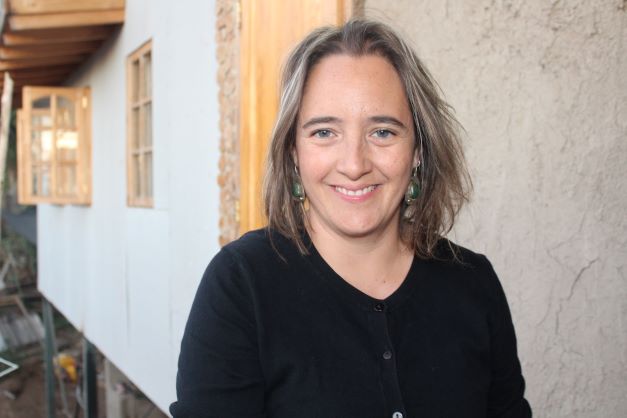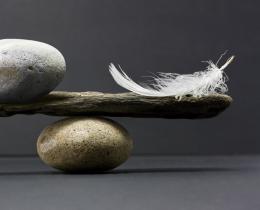María Loreto Retamales fills a polypropylene sand bag with moistened earth, and begins to secure it with barbed wire atop coiled bags. As she demonstrates the Superadobe building process, she looks up to explain to students why this construction is so sustainable—especially for places with scarce resources.
“Superadobe does not require wood and metal structures,” she says. “It’s simplified so that any one of you can build your own shelter from the earth beneath your feet.”
María, a specialist in bio-construction and director of Superadobe del Sur in Chile, South America, likes to empower her students.
“They need to take ownership, to take the reins,” she says. “We must re-think everything to make the changes the planet deserves.”
María learned Superadobe technology at the CalEarth Foundation, located in Hesperia, California, and founded by Nader Khalili, the Iranian architect who brought ancient adobe design into this century for a more sustainable, cost-effective building option. The revolutionary building system integrates traditional earth architecture with contemporary global safety requirements and a passive solar design.
Building With Nature Top of Mind
María’s school of natural construction was the first to teach the Superadobe technique in South America, with workshops in Bolivia, Chile, and Argentina. What motivated Maria to teach it? She was noticing how people were still clinging to inefficient building methods, though they claim to be sustainable.
“They want to be part of the solution, but without a real understanding of nature and its functioning, it’s almost impossible,” María says. She wanted to contribute to a meaningful change in the way we build, with nature as the priority.
She tells a story to illustrate the problem. An architect in Chile called her because he needed her help with a project in which a biological filter is used to fill a pond with reused water.
The property owner told her that he wanted the pool to be on the top of the hill and the house was in the middle. He wanted to be able to watch the ducks when he pulled in. María told him that with permaculture design, it would be a waste of energy to pump the water uphill to the pond, so the pool should go at the bottom. He answered, “But I have a lot of money so it’s not a problem for me.”
María did what he asked but didn’t feel good about it.
Ecological Literacy Comes Into Play
It all became clearer once María took part in the Ecological Literacy Immersion Program (ELIP) at Omega.
“Through ELIP, I learned about how white-supremacist thinking affects everything—the way people build, the way they teach, and the way that people are respected and paid,” she says.
White supremacist thinking is most often characterized by paternalism, power hoarding, perfectionism, and the idea that there is only one way to get a project done.
“ELIP gave me confidence in myself, in what I’m building with my family and with my students. I could finally understand that even though I felt like I was paddling upriver in my work, my conscience was right. If we are to become sustainable, we need a new way of thinking, a new way of designing systems, and a new way of developing relationships.”
A Holistic Perspective
Now, María has a re-energized her vision both at work and at home. She is launching an online Sustainability Institute to teach Latin American people natural construction, composting, and natural health, among other skills.
Students sign up to learn Superadobe, but then come to find there are a lot of other things to consider. One couple learned how to compost and took those tools home to show their family how to reduce waste and create fertile soil for reuse.
“When people come to my Superadobe classes, I help them understand a holistic perspective. I help people make decisions regarding the construction technique that best suits them according to the conditions of their land and factors such as family support, or economic support.”
María has passed on her new values to family and friends.
“I have a 17-year-old daughter and I told her about how white supremacist thinking affects everything, and she told me, ‘Mom, this thing you learned is incredible! Now I can understand why things are the way they are.’ ”
It’s helped María understand water privatization within Chile over the past 10 years, an issue that is causing lack of water access—especially for indigenous people. Instead of water from the rivers being accessible to all, it is pumped to plantations, and those rich plantation owners own the water.
“I thought I was going to learn a lot of techniques through ELIP, and it blew my mind because I actually learned new ways to think. It was a breakthrough for me."



